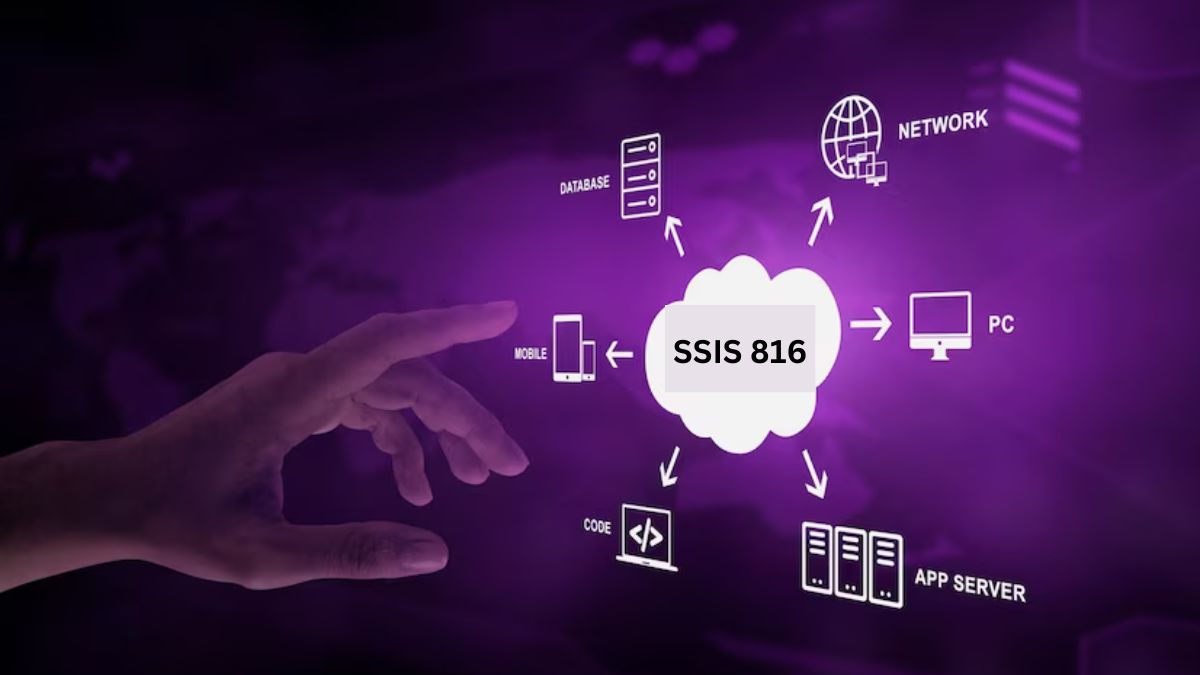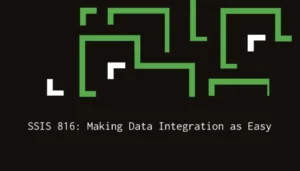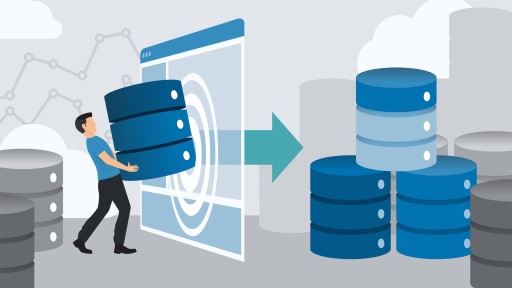SSIS 816, or SQL Server Integration Services, is an ETL (Extract-Transform-Load) platform developed by Microsoft. This comprehensive guide will provide you with fundamental knowledge and skills to effectively use the SSIS 816 system. In the world of data-driven decision making, SSIS 816 plays a crucial role in delivering a powerful integration platform. In this guide, we will discuss the basics of SSIS, how it serves in data integration, data transfer process, setting up the package, common mistakes, and more.
Introduction to SSIS 816

SSIS 816, or SQL Server Integration Services, is an ETL (Extract-Transform-Load) platform developed by Microsoft. It is used to integrate, migrate, and manipulate data from various sources and destinations.
The primary purpose of SSIS is to facilitate complex data integration tasks that involve the following:
- Data extraction from various sources like Excel, Flat Files, XML, SQL databases, etc.
- Data transformation by performing actions like data cleansing, aggregation, de-duplication, and more.
- Data loading into desired destinations like SQL databases, data warehouses, flat files, etc.
SSIS is useful in data integration due to its ability to handle large amounts of data, high performance, and extensive data transformation capabilities.
Understanding Data Transfer Process
There are two main components involved in the data transfer process in SSIS 816: Data Flow components and Control Flow components.
Data Flow Components

Data flow components include sources, transformations, and destinations. These components are responsible for transferring data within SSIS packages and define the overall data flow.
Source
A source retrieves data from a specific location, such as text files, databases, or XML documents. The extracted data is then transformed and sent to a destination.
Transformation
Transformations are at the core of SSIS, as they are used to manipulate, clean, and format the data. Some common transformations include sorting, merging, splitting, aggregating, and converting data types.
Destination
After going through the required transformations, data is loaded into the desired destination, which may include databases, data marts, or data warehouses.
Control Flow Components
Control flow components direct the workflow of the package. Some key components include:
- Tasks: Actions that can be performed by the SSIS package, such as executing an SQL command, sending an email, or running a script.
- Containers: Used for grouping similar tasks together, or for looping through tasks.
- Precedence Constraints: Define the order in which tasks and containers will be executed in the control flow.
Logging and Error Handling
SSIS 816 provides extensive logging and error handling capabilities. Logging captures information about the package execution, while error handling specifies how to proceed when the package encounters errors.
Acquiring, Installing, and Setting up SSIS 816 Package

Follow these step-by-step instructions to acquire, install, and set up the SSIS 816 package:
- Acquire the SSIS Package: You can obtain the SSIS package by downloading it from Microsoft’s website or purchasing it as part of a SQL Server license.
- Install SSIS Package: Use the installer file to install the SSIS 816 package on your system. Make sure you have all the necessary components and permissions before proceeding with the installation.
- Configure SSIS Package: Once installed, you will need to configure the package by providing basic information such as server name, database credentials, etc.
- Create a New Package: After configuration, you can create a new SSIS package and start building your data integration tasks.
Common Mistakes and Issues
While working with SSIS 816, there are some common mistakes and issues that users may encounter. These include:
- Incorrect Connection Settings: This can result in data transfer failures or incorrect data being loaded into the destination.
- Poorly Designed Packages: Inefficient or poorly designed packages can lead to slow performance and potential errors.
- Data Conversion Errors: When dealing with different data types, users may face issues with converting data, resulting in errors during the execution of SSIS packages.
To avoid these issues, it is essential to thoroughly test and review your packages before deployment.
Tips, Tricks, and Useful Resources

To become proficient in using SSIS 816, here are some helpful tips and tricks:
- Familiarize yourself with the SSIS toolbox and its various components.
- Use variables to dynamically configure package properties and values.
- Utilize third-party tools and resources to enhance your SSIS experience.
- Join online communities and forums to ask questions, share knowledge, and learn from others’ experiences.
- Explore the official Microsoft documentation for a comprehensive understanding of SSIS 816 capabilities.
Conclusion on SSIS 816
SSIS 816 is a powerful data integration tool that can greatly simplify the process of managing and manipulating data. By understanding the data transfer process, avoiding common mistakes, and utilizing useful tips and tricks, users can effectively utilize SSIS to streamline their data integration tasks. With continuous learning and practice, users can become proficient in using this powerful ETL platform. So start exploring SSIS 816 today and unleash its full potential for your data integration needs!












Leave a Reply